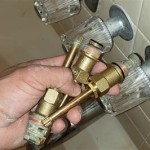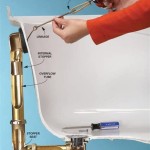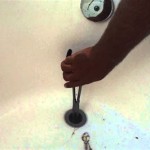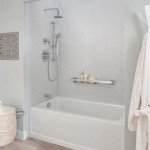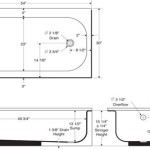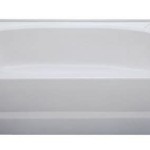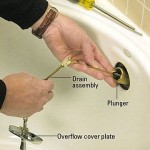Bathtub vs. Bath Tub: Exploring a Linguistic Nuance
The English language, while seemingly straightforward at times, is filled with subtle nuances and variations that can spark debate and curiosity. One such instance lies in the spelling of a common household fixture: the bathing receptacle. Is it "bathtub" or "bath tub"? Both forms are prevalent, recognized, and used throughout the English-speaking world, leading to questions about their origins, correctness, and preferred usage.
This article aims to delve into the intricacies of "bathtub" versus "bath tub," examining their etymology, grammatical function, regional variations, and stylistic preferences. It will explore how language evolves, and how seemingly interchangeable terms can carry subtle connotations and implications.
Etymology and Grammatical Construction
To understand the variations in spelling, it's crucial to examine the etymological roots of the term. "Bath" is derived from the Old English word "baeth," referring to the act of washing or immersing oneself in water. "Tub," on the other hand, comes from the Middle Dutch word "tobbe," denoting an open container used for various purposes, including washing. The combination of these two words, representing the act of bathing and the container used, creates the compound noun we recognize today.
The core of the debate lies in whether this combination should be treated as a single, closed compound word ("bathtub") or as an open compound consisting of two separate words ("bath tub"). Compound nouns in English often evolve over time, moving from open compounds (two separate words) to hyphenated compounds (words joined by a hyphen) and eventually to closed compounds (single word). This process reflects the increasing integration and semantic unity of the combined terms.
The transition from "bath tub" to "bathtub" exemplifies this linguistic evolution. Initially, "bath" and "tub" were perceived as distinct words functioning independently. As the concept of a specialized container specifically designed for bathing became more commonplace, the connection between the two words strengthened, leading to a gradual consolidation of the term. Grammatically, both forms function as nouns, capable of serving as subjects, objects, or complements within a sentence. However, the choice between the two can subtly alter the perceived formality and modernity of the writing.
Regional Variations and Usage Patterns
While both "bathtub" and "bath tub" are widely accepted, subtle regional variations in usage exist, particularly between American English and British English. In American English, "bathtub" is generally the more prevalent and preferred form, especially in contemporary usage. It is commonly seen in newspapers, magazines, technical manuals, and online content produced and consumed within the United States.
British English, while also recognizing "bathtub," tends to exhibit a slightly greater tolerance for "bath tub," particularly in older texts and more formal contexts. The preference for the open compound form might stem from a more conservative approach to language and a greater emphasis on maintaining the individual identity of the constituent words. However, with increasing globalization and the influence of American media, "bathtub" is gaining traction in British English as well.
Beyond the Atlantic divide, other English-speaking regions, such as Canada, Australia, and New Zealand, exhibit a mixture of both forms. Canadian usage often aligns with American English, favoring "bathtub," while Australian and New Zealand English demonstrate a greater degree of variability, with both forms appearing frequently. The specific choice often depends on the publication style guide, the intended audience, and the individual writer's preference.
Furthermore, the rise of the internet and social media has contributed to the homogenization of language. The widespread dissemination of content from various regions has exposed users to a wider range of linguistic styles, blurring the traditional boundaries between American and British English. As a result, the distinction between "bathtub" and "bath tub" may become even less pronounced in the future.
Stylistic Considerations and Contextual Relevance
The choice between "bathtub" and "bath tub" can also be influenced by stylistic considerations and the specific context of the writing. In formal writing, such as academic papers or legal documents, there might be a slight preference for "bath tub," particularly if adhering to a style guide that emphasizes clarity and avoids overly colloquial language. The open compound form may be perceived as more precise and less susceptible to misinterpretation.
Conversely, in informal writing, such as blog posts or social media updates, "bathtub" is often the more natural and preferred choice. Its conciseness and familiarity make it well-suited for casual communication. The closed compound form also aligns with the general trend of using shorter, simpler words in online content.
Technical writing, such as plumbing manuals or product specifications, often favors "bathtub" due to its widespread acceptance and clarity. However, the specific requirements of the documentation should always be considered. Some style guides may mandate a particular form, regardless of regional preferences.
Creative writing, such as novels and short stories, offers the greatest degree of flexibility. The author can choose the form that best suits the tone, style, and character of the narrative. The decision may be based on aesthetic considerations, such as the rhythm and flow of the sentence, or on thematic considerations, such as reflecting the character's social class or regional background.
Ultimately, the choice between "bathtub" and "bath tub" comes down to a matter of personal preference, stylistic considerations, and the specific context of the writing. Both forms are grammatically correct and widely understood. However, being aware of the subtle nuances and regional variations can help writers make informed decisions and communicate effectively with their intended audience.
The ongoing evolution of the English language ensures that such linguistic debates will continue to arise. By examining these variations, individuals can gain a deeper appreciation for the richness and complexity of the language and develop a more nuanced understanding of its ever-changing nature.

Solving Biggest Bathroom Renovation Dilemmas Part 1 Bathtub Vs Shower At Hand Renovations

Deep Soaker Bathtub Vs Classic Style Which To Choose Retro Renovation

Difference Between Spa Bathtub And Jacuzzi Acrolite Bathtubs

Showers Vs Bathtubs Which Should You Have In Your Bathroom

Which One Is Better A Walk In Shower Or Bath Georgia Home Remodeling

The Pros And Cons Of Showers Vs Tubs

Bathtubs Vs Showers Which Is Best For Your Bathroom

Tub Vs Shower The Big Bathroom Remodeling Design Decision Bob Vila

Walk In Bathtub Vs Shower Woodbridge Bath

Shower Vs Bathtub Which Is Better Ruhe
Related Posts

